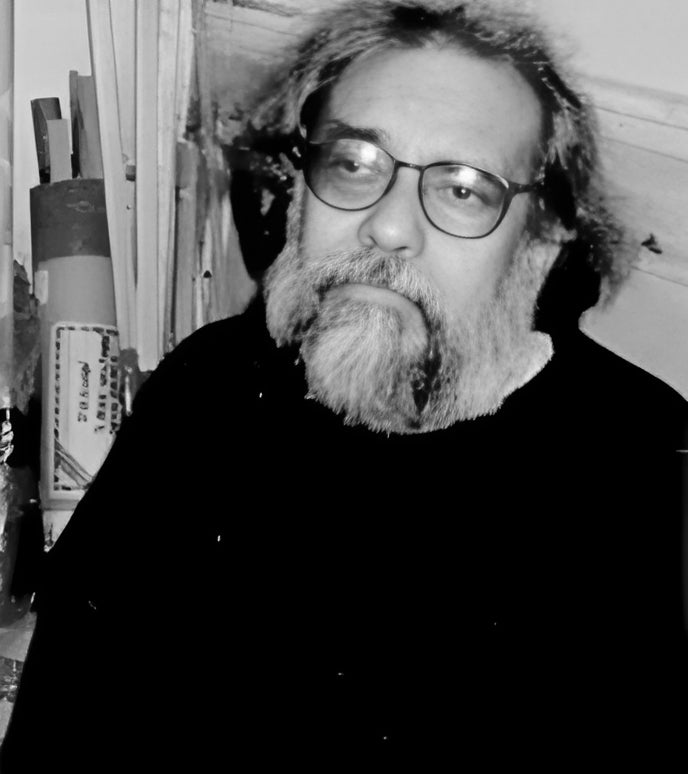
RAJENDRA DHAWAN
Rajendra Dhawan’s career reflects a restless pursuit of innovation, bridging diverse cultural landscapes and artistic traditions. Born in 1936, he began his formal training at the Delhi School of Art (1953–1958), where he absorbed modernist principles that laid the groundwork for his evolving practice. Further study at the Academy of Fine Arts in Belgrade (1960–1962) introduced European influences that broadened his visual language and expanded his artistic horizons.
As a co-founder of The Unknown, an avant-garde collective active between 1960 and 1964, Dhawan played a pivotal role in challenging the dominant art conventions in post-independence India. The group’s exhibitions opened new avenues for experimental art, emphasizing non-traditional forms and fresh perspectives. Dhawan’s work from this period onward balances bold color schemes with dynamic compositions, navigating the tension between abstraction and figuration in ways that engage both the eye and the intellect.
Relocating to Paris in 1970, Dhawan immersed himself in one of the world’s most vibrant art scenes. His presence in the city’s creative community facilitated ongoing growth and experimentation, reflected in a series of solo exhibitions spanning decades. Notable venues include Galerie du Haut-Pavé in Paris (1972, 1974, 1977, 1981, 1989), Galerie Horn in Luxembourg (1973, 1975), Gallery Chemould in Mumbai (1989, 1993), Dhoomimal Gallery in Delhi, and Galerie François Mitaine (1990). These shows chart a trajectory of artistic evolution marked by a commitment to pushing boundaries. Dhawan’s paintings are represented in esteemed collections such as the National Gallery of Modern Art in India, Lalit Kala Akademi, Bharat Bhavan Museum, and the National Foundation of Contemporary Art in Paris. This presence across continents underscores his role as a cultural bridge, enriching both Indian and international modern art discourses.
Throughout his life, Rajendra Dhawan embodied a spirit of fearless experimentation. His artistic journey, traversing continents and artistic movements, remains an inspiring testament to the possibilities of creative innovation. His legacy endures in works that continue to resonate with emerging artists and audiences, embodying a dialogue between tradition and modernity, local roots and global outlook.

